Kelly McGonigal on Falling (Back) in Love With Movement

The mental and physical health benefits of regular exercise are ample, but most people still see working out as a burden. Health psychologist, author and Stanford lecturer Kelly McGonigal, Ph.D., hopes to change that dynamic with her new book “The Joy of Movement” (Avery, 2019). She believes that the fitness industry’s prioritization of calorie loss and physical appearance can take the joy out of exercise. McGonigal uses storytelling and science to show that movement is foundational to social connection, self-expression and mental health. She believes that finding a physical activity that’s based in joy, rather than body image, is the key to a lifetime of health and happiness.
We interviewed McGonigal to learn more about her life and life’s work. Her profound insights made us rethink our own relationship to exercise and the role it plays in not just keeping us physically fit but also in bringing us happiness, meaning and kinship. We hope it does the same for you.
Adolescent ambitions
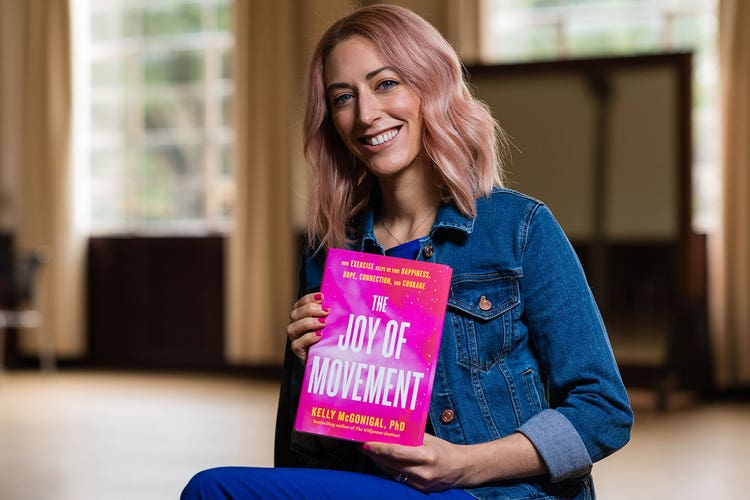
While McGonigal is mostly known for her work as a health psychologist, her childhood career goal was to be an aerobics instructor. Her self-described “family of thrifters” often picked up VHS workout tapes from garage sales. McGonigal did them all.
From this early age, McGonigal realized that movement, particularly movement set to music, increased both her energy and her hopefulness. It helped her find her joy, which she defines as “that state of mind and body where you feel optimistic about yourself and about the world.” By fourth grade, she was full-on smitten with calisthenics and looked forward to her after-school exercise sessions in front of the television. Over the years, exercise has also helped her deal with stress. “[There has always been] something in me that needs to move to regulate my anxiety,” she says.
Twenty years ago, McGonigal fulfilled her dream of becoming a group fitness instructor. Between lectures, speaking, and writing, she continues to teach yoga and dance. The collective joy she experiences with her students is essential to her own well-being and happiness.
“The Joy of Movement” brings McGonigal’s two careers, as a psychologist and as a fitness instructor, together. “This book is me trying to finally integrate my full self,” she says.
Shift your mindset




Exercise shouldn’t be bribe-based, McGonigal says. Instead of making movement an easier pill to swallow by binging-watching Netflix while on the treadmill or rewarding yourself with a cocktail post-workout, she advises to really think about the existing links between your most basic joys and physical movement. Once the connection is found, McGonigal says to just amplify the relationship. For example, if you love nature and enjoy group exercise but don’t usually combine the two, get out of the gym and join a hiking group, find an outdoor boot camp or start taking long walks with a handful of friends.
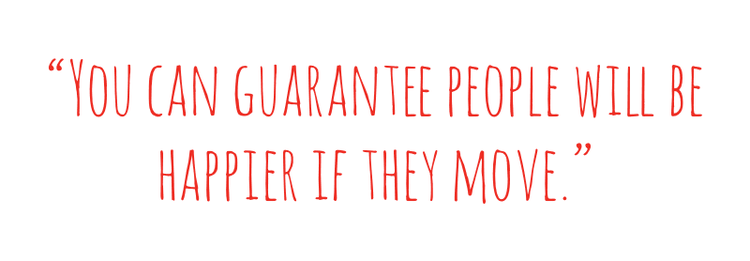
Instead of after-the-fact, results-oriented exercise, McGonigal’s research suggests that movement based in human connection, self-expression or skill mastery increases workout frequency and provides a “more powerful antidote to the modern epidemic of depression, anxiety and loneliness.” When movement is tied into your core interests and values, you can push beyond calories to something much deeper and more fulfilling. “If you think of movement as informing your sense of self,” McGonigal says, “it really opens up a whole new way of thinking about what a workout should do.” This mindset shift makes the experience meaningful rather than tedious and one-dimensional.
McGonigal says something like GoodGym, an organization that combines running, volunteering and dining, checks several joy boxes at once. She’s a big fan of group fitness, not just because she teaches it but also because research shows that synchronized movement alters our neurochemistry and “allows us to experience ourselves as connected to something bigger than ourselves.” McGonigal says this is especially important when working through loss and grief because “your sense of self transcends the limits of your own body,” making you literally feel connected to something bigger than yourself, and to others. “You’re tapping into this human capacity to sense our interdependence,” says McGonigal, which creates an incredible sense of belonging and relief.
Think beyond the treadmill
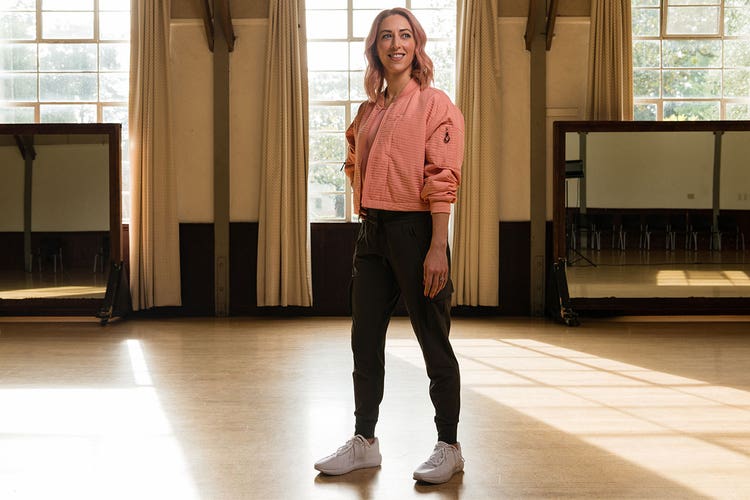
If you’re finding it difficult to make a connection between your interests and your exercise preferences, McGonigal says to think back to a time in your life when you enjoyed something physical. Then think about a way to tie your current life circumstances to that activity or to something similar to that activity. Still struggling? McGonigal says to think about a physical feat you’d love to watch on YouTube. If you love choreography videos, try a dance class. If you get inspired watching people cross a finish line, maybe it’s time to train for a 5K or a marathon. If you can’t get enough of Simone Biles’ explosive floor routine, you don’t need to take up gymnastics—but consider what kind of movement would make you feel powerful.
For readers who are still stumped, McGonigal says to simply think about what you want more of in your life, be it something tangible (e.g., music, nature, travel) or intangible (e.g., hope, confidence, calm). The more connected you can make the physical action to a mental or emotional goal, the more likely you are to succeed. Rather than measuring your success in steps or calories, McGonigal says to simply aim for whatever tangible or intangible you’ve selected. If you experience more of what you were after, then you’ve succeeded, regardless of what the scale says.
Survival of the most joyful
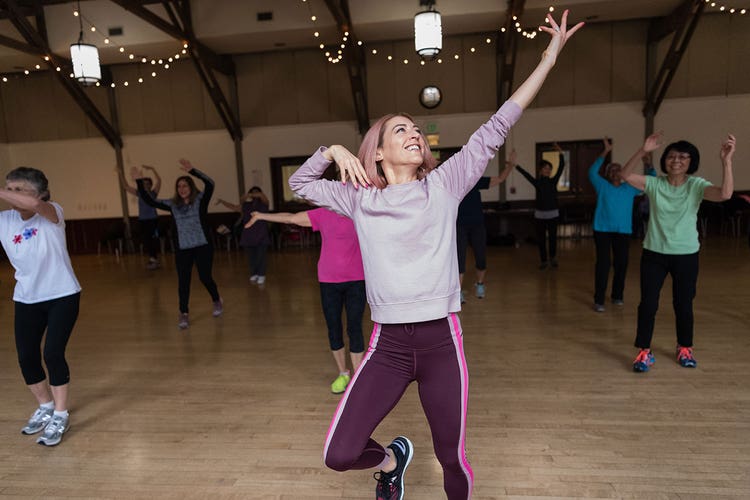
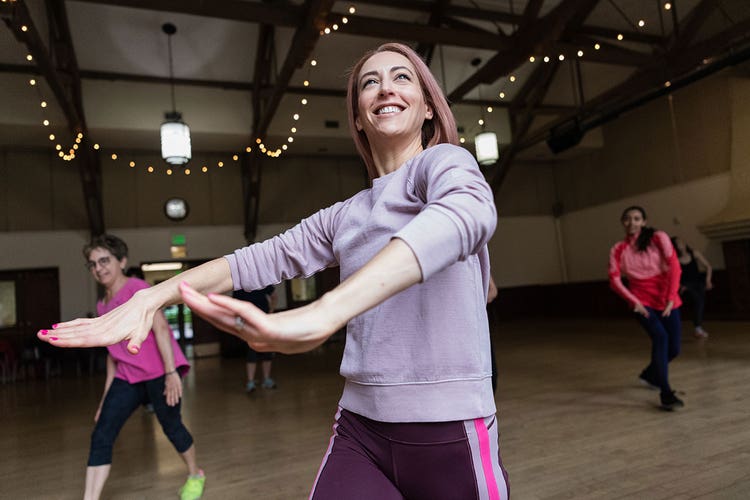
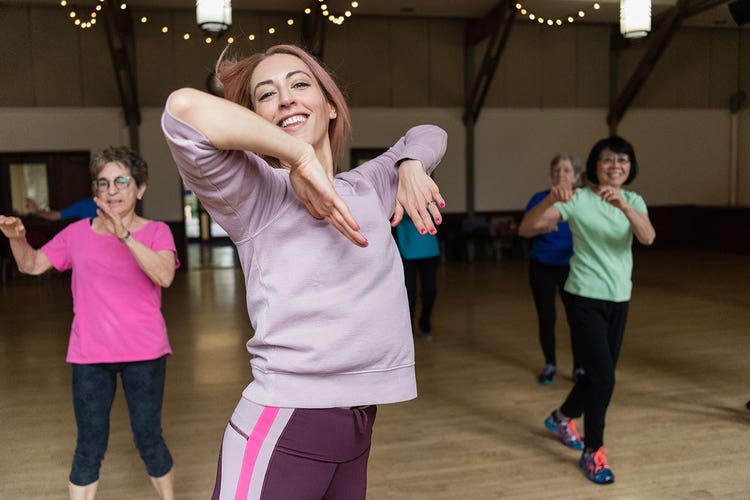
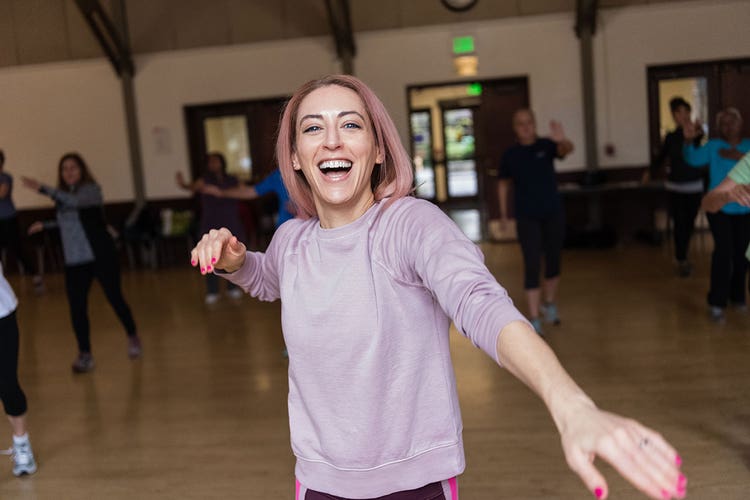
If you’re still doubting McGonigal’s theory, consider this: Evolutionary biology proves that the link between movement and joy is an adaptation for survival. As hunters and gatherers, early humans felt joy when they exerted themselves to find food for their tribe. Their ability to find pleasure and hope through physical effort helped humans thrive. Though movement is not as connected to your immediate survival as it once was, the neurochemical reward—aka, the exercise high–still motivates us to move.
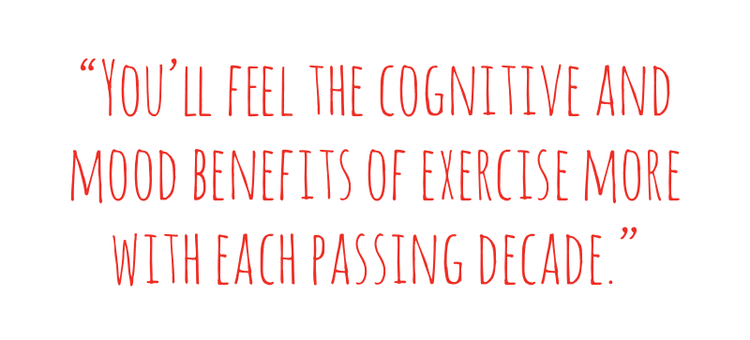
For more on Kelly McGonigal, see her website, read “The Joy of Movement” and watch her 2013 TED talk.
Video & photo credit: Mark Kuroda, kurodastudios.com
Hair & make-up: Katie Nash, katienashbeauty.com